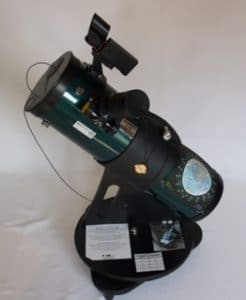The Rochester Astronomy Club is cooperating with the Rochester Public Library to make it possible for patrons to check out an Orion 4.5 inch StarBlast telescope.
 Your experience with the StarBlast telescope will be more rewarding if you spend some time becoming familiar with the night sky before you check it out and perhaps learn a little about the telescope itself.
Your experience with the StarBlast telescope will be more rewarding if you spend some time becoming familiar with the night sky before you check it out and perhaps learn a little about the telescope itself.
An accesory bag is attached to the telescope that contains a red headlamp*, the book National Audobon Society Pocket Guide to the Constellations, and an instruction manual.
Click here to download the instruction manual.
* You will need to use red light to look at books and star maps when you are looking for objects in the dark so that your eyes don’t lose their dark adaptation.
When you check out the telescope, you will receive the following documents.
Click on the links if you would like to look them over ahead of time.
This is a map for the current month’s sky. It shows the constellations, location of planets and major sky objects. To the left of the map is a list of information about solar system objects (such as the phase of the moon). The second page lists celestial objects that can be seen during that month sorted by how best to view them: naked eye, binoculars, telescope. You should be able to see all of the naked eye and binocular objects with the StarBlast, as well as many of the telescope objects.
These are images created by the Astronomical League of the First Quarter Moon (above the horizon roughly noon through midnight) and Last Quarter Moon (above the horizon roughly midnight through noon). The best times to view the moon are a few days before and after First and Last Quarter. These dates are marked on most wall calendars, and also on the SkyMaps referred to above.
When the moon is full, the features tend to be somewhat washed out and not as defined because sunlight is hitting it straight on, so this isn’t the ideal time to look at the moon. At New Moon, the moon is so close to the sun that it can’t be seen at all, but it is a good time to look at deep sky objects like galaxies and star clusters.
Objects that can be Viewed with the StarBlast Telescope
is another place to find objects to look for other than the moon and planets. It tells you the best time of year to view an object, how easy it will be to find (ranging from Easiest
to Faint
), and on which page of the Constellations book that accompanies the StarBlast to find the constellation in which the object is located.
